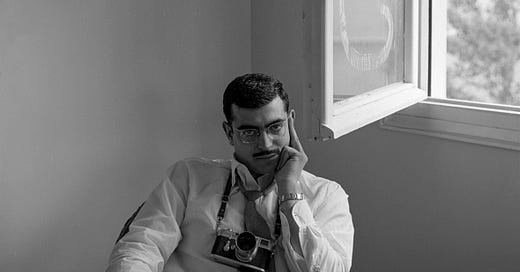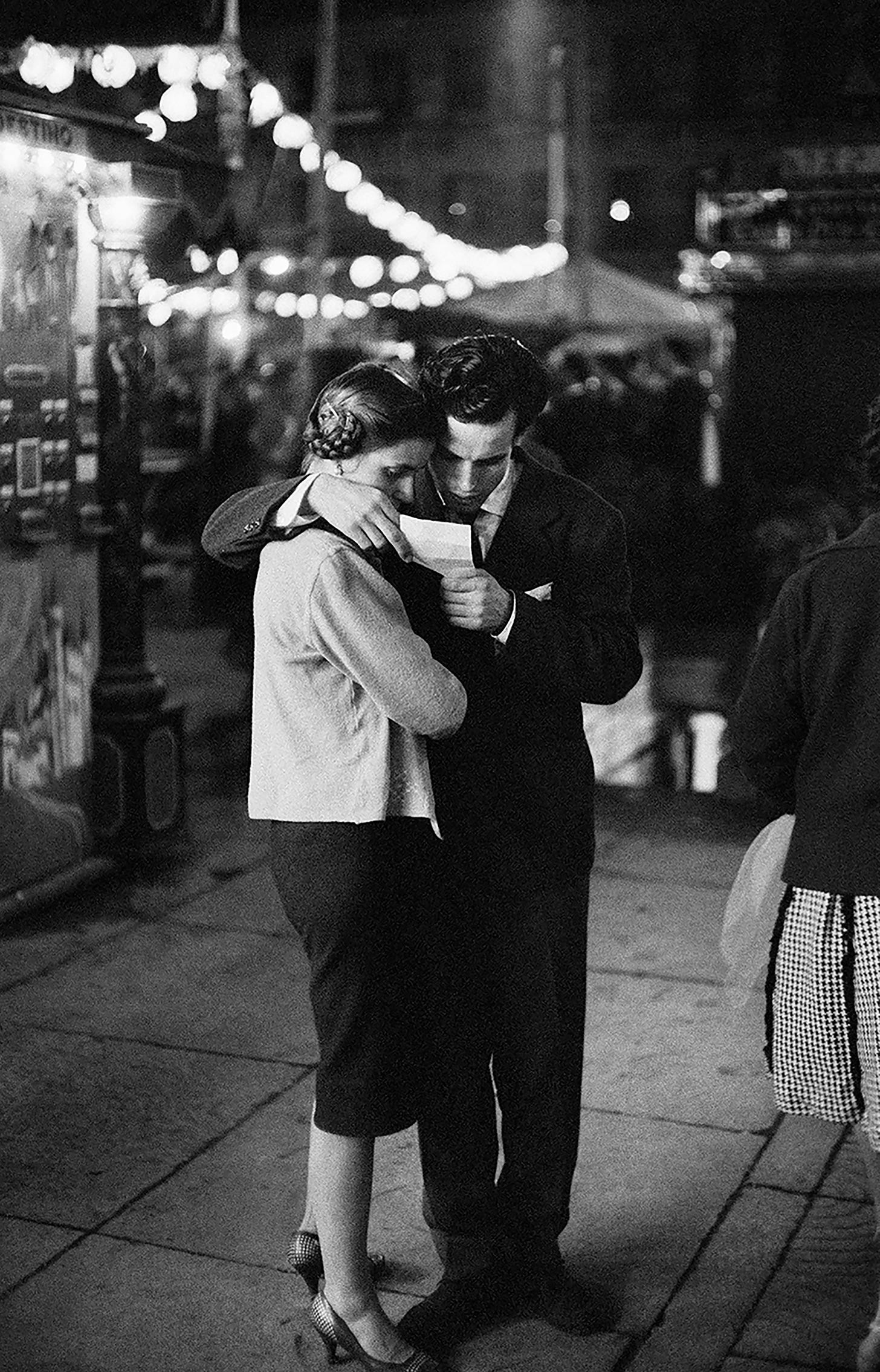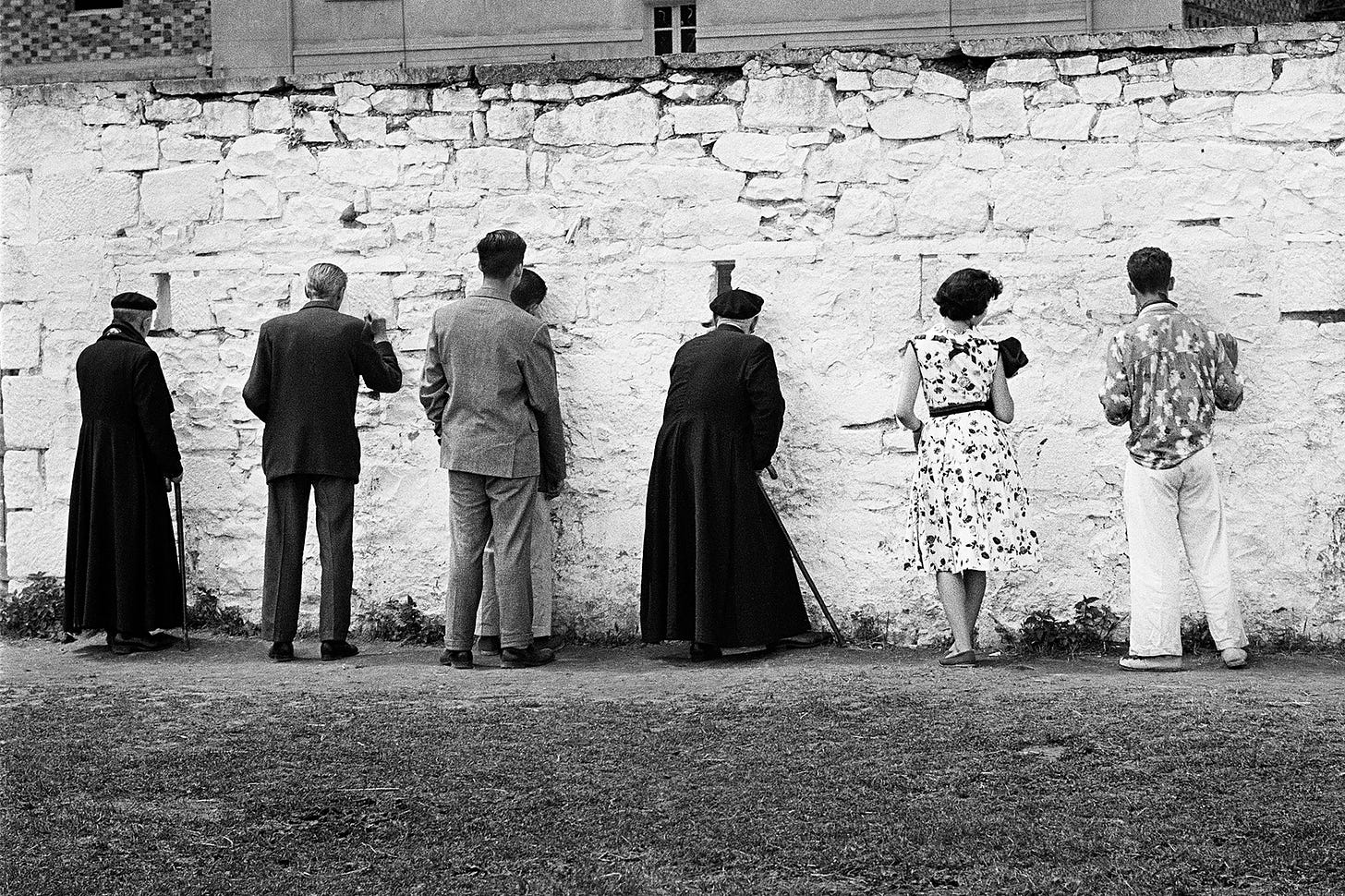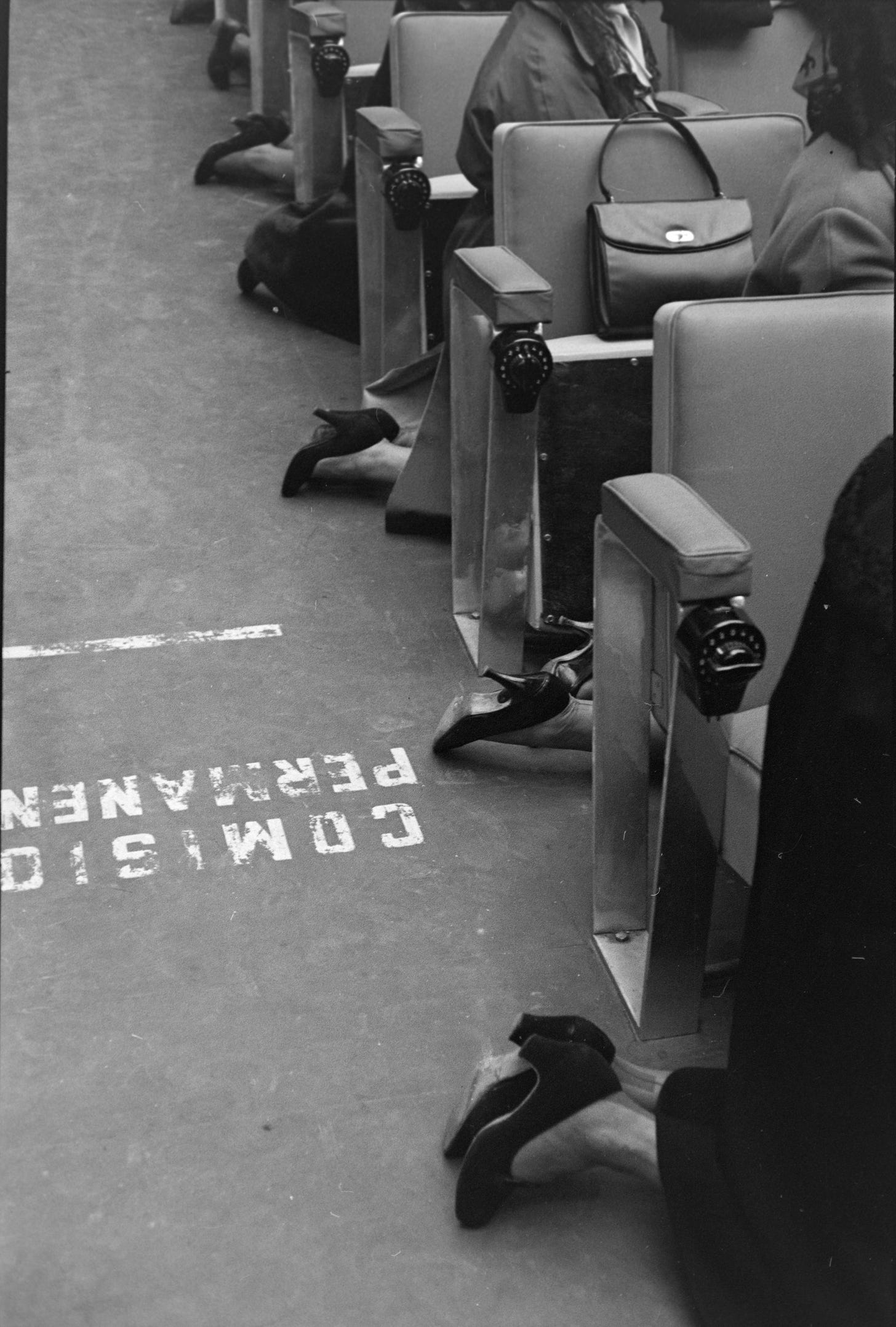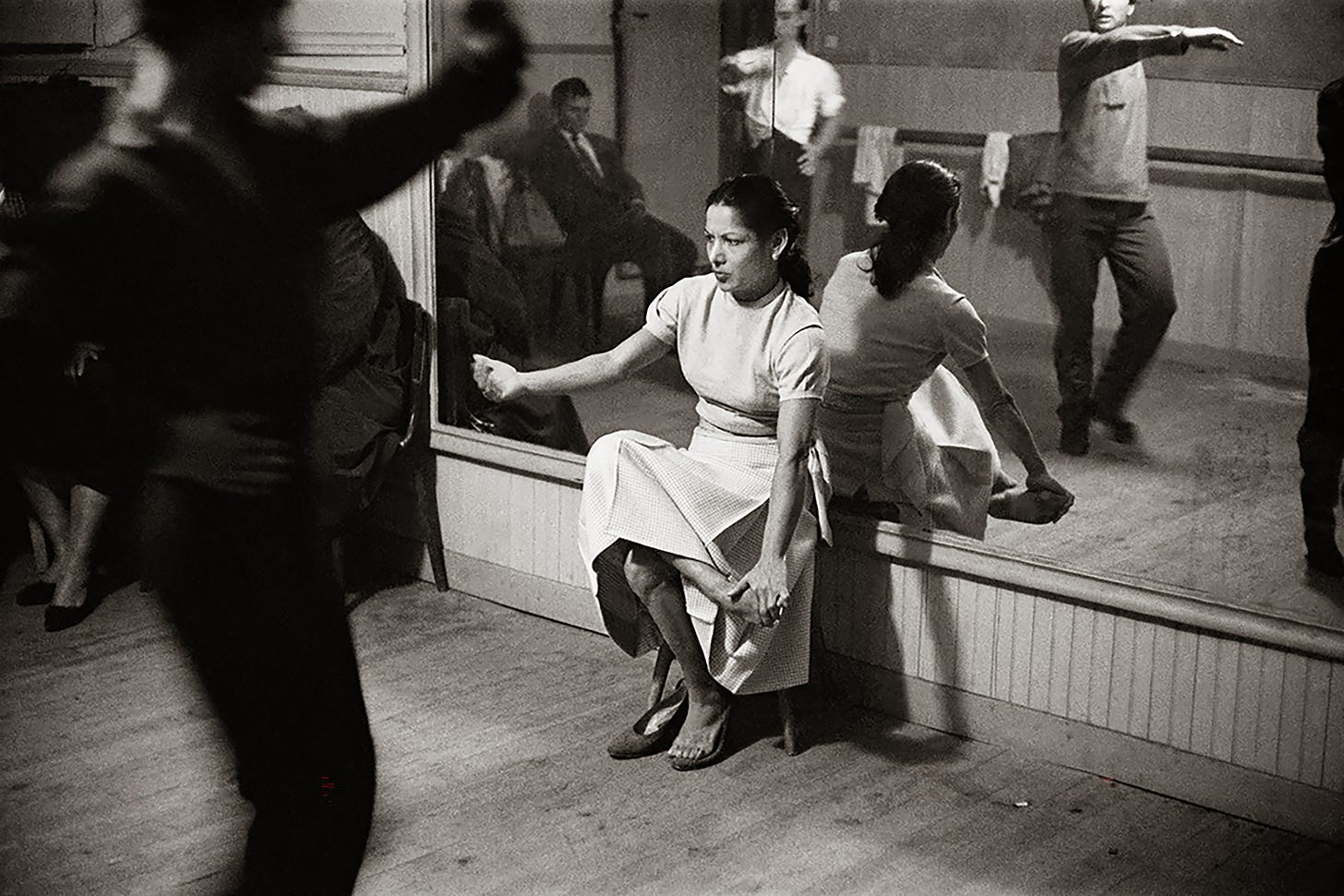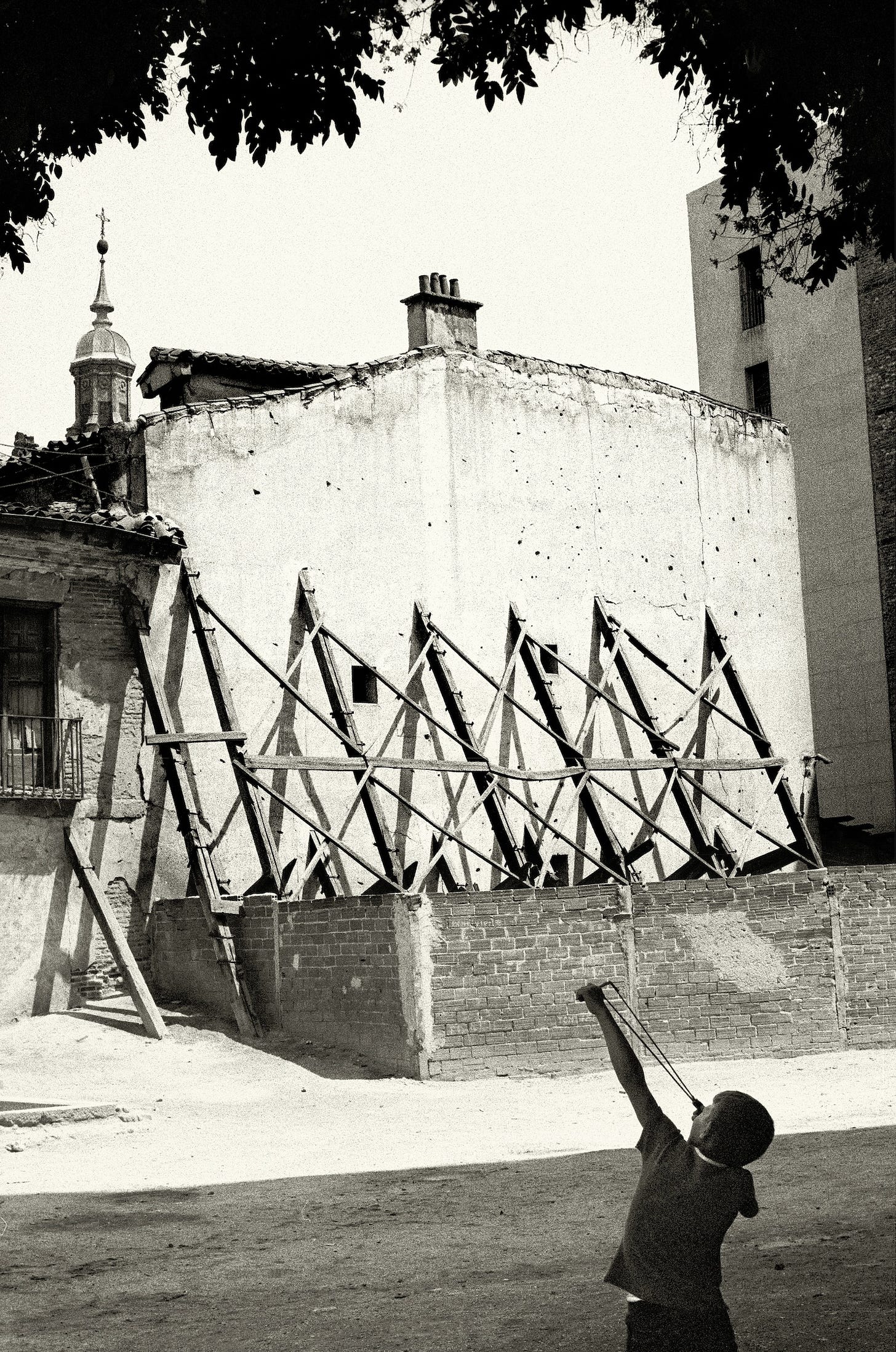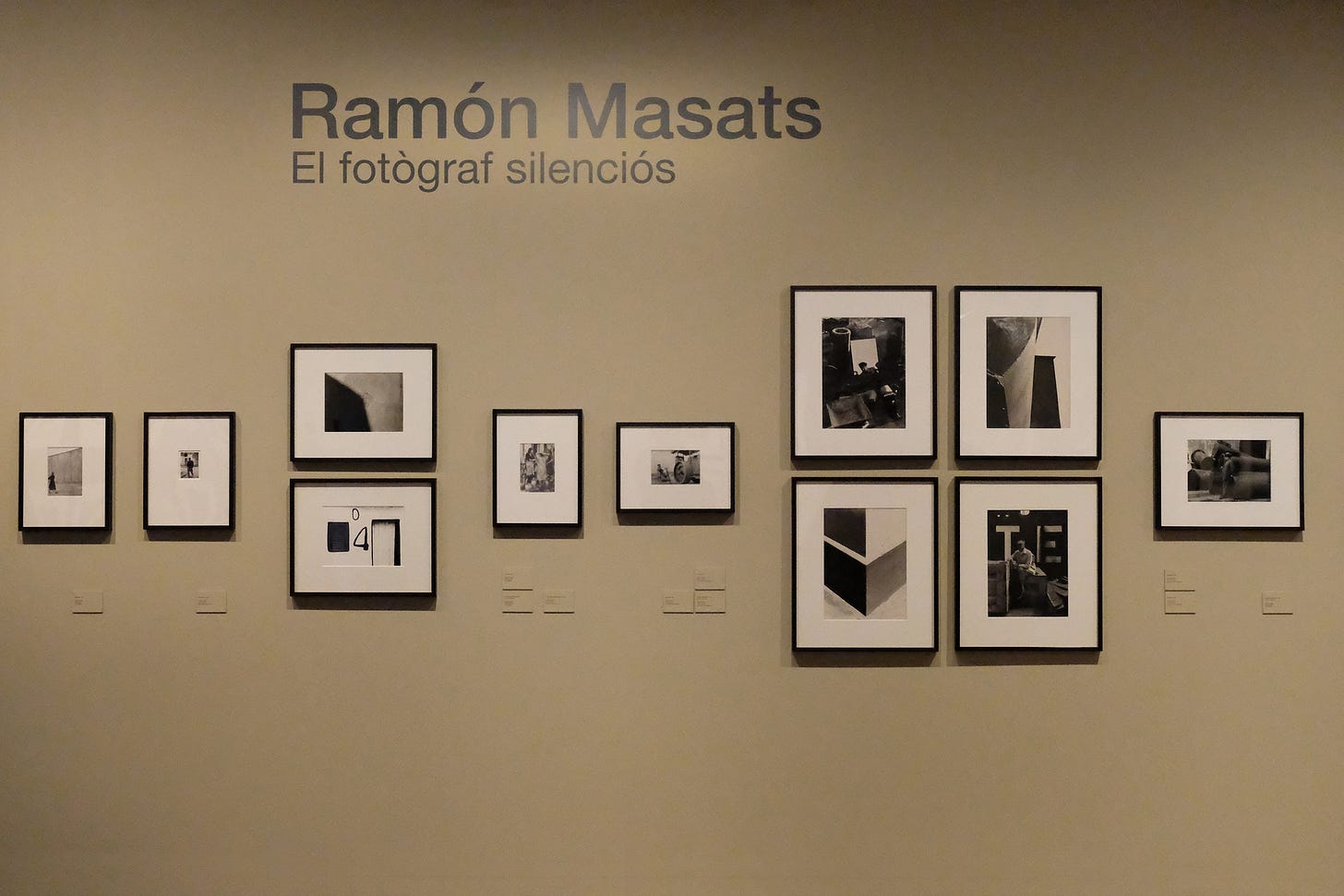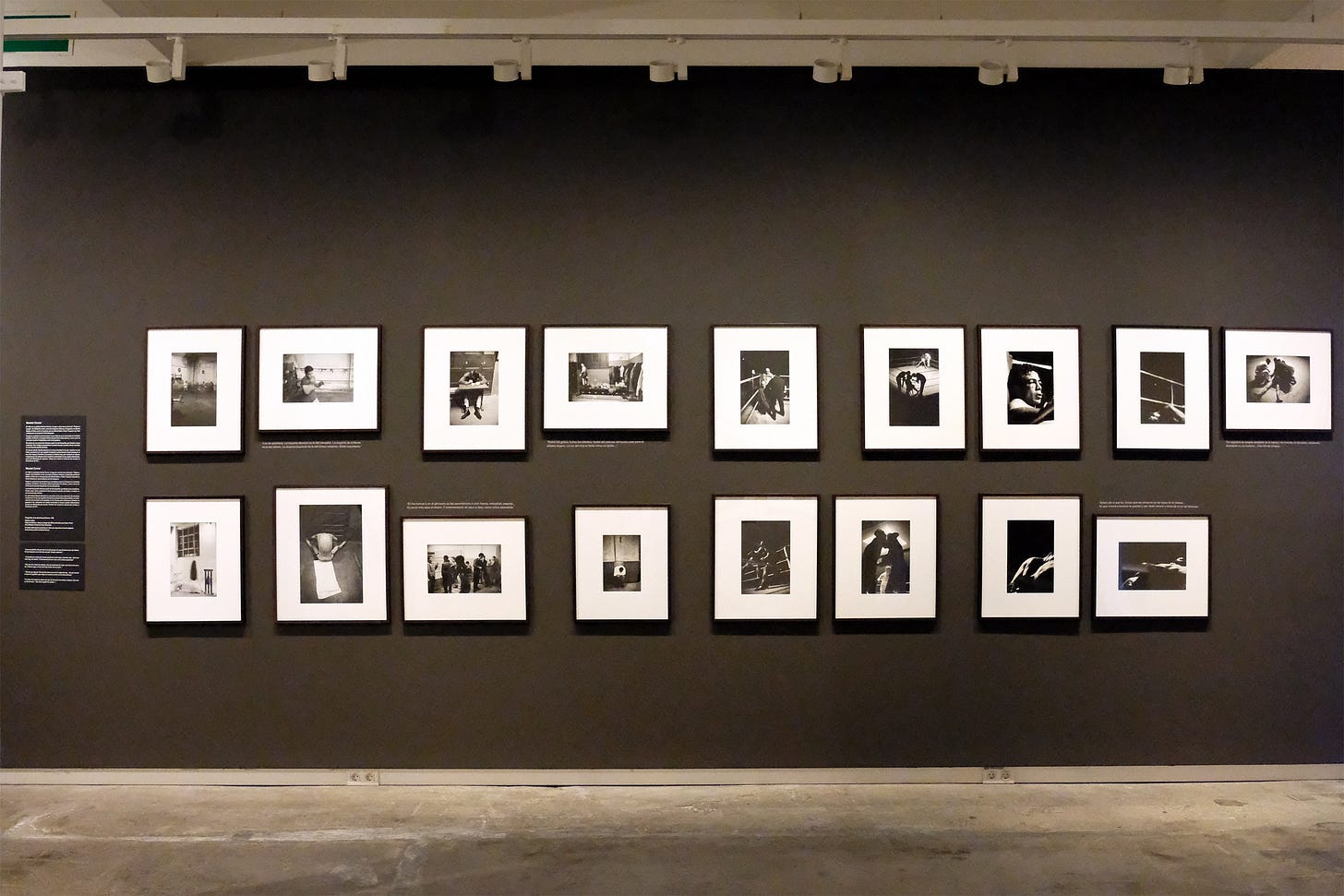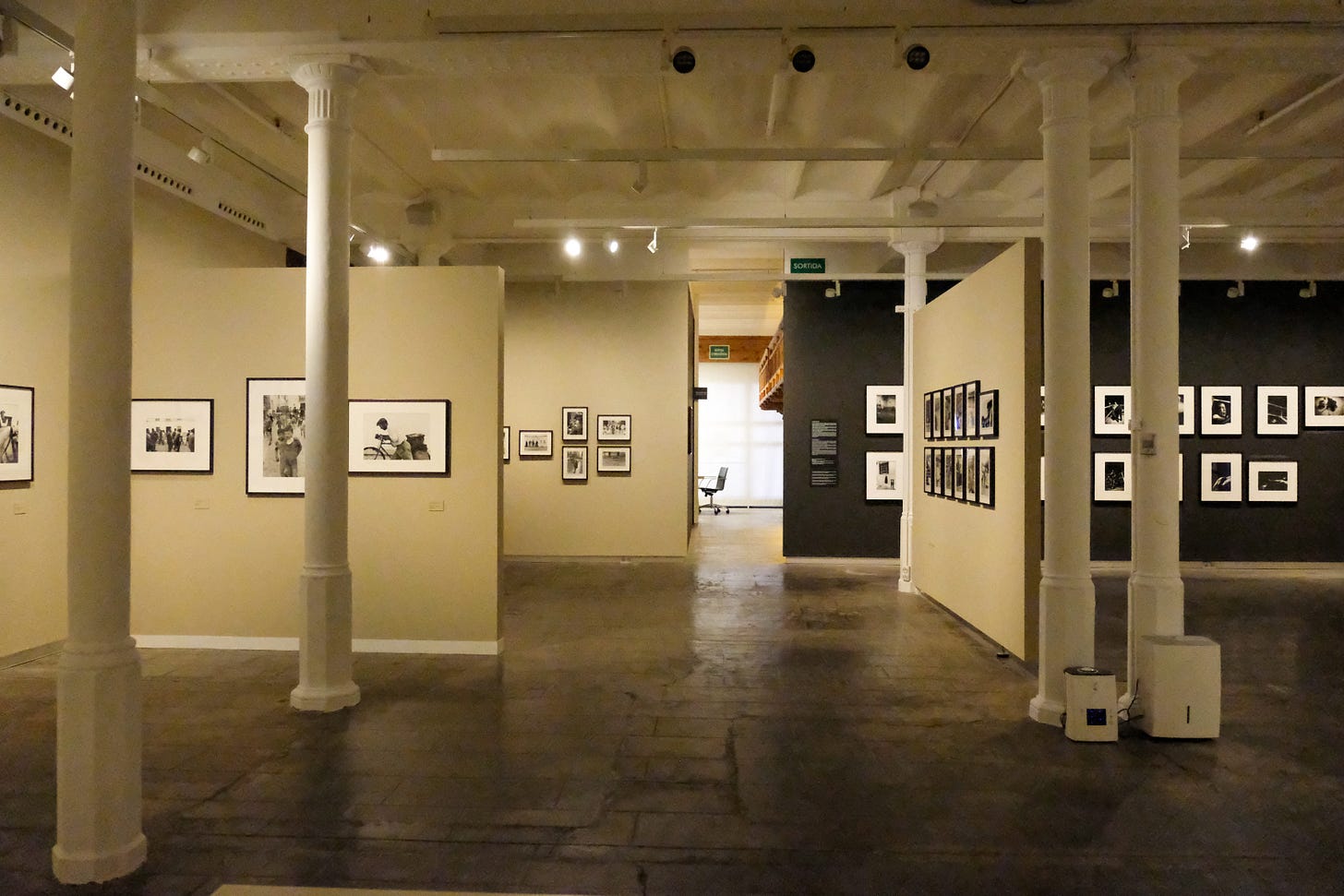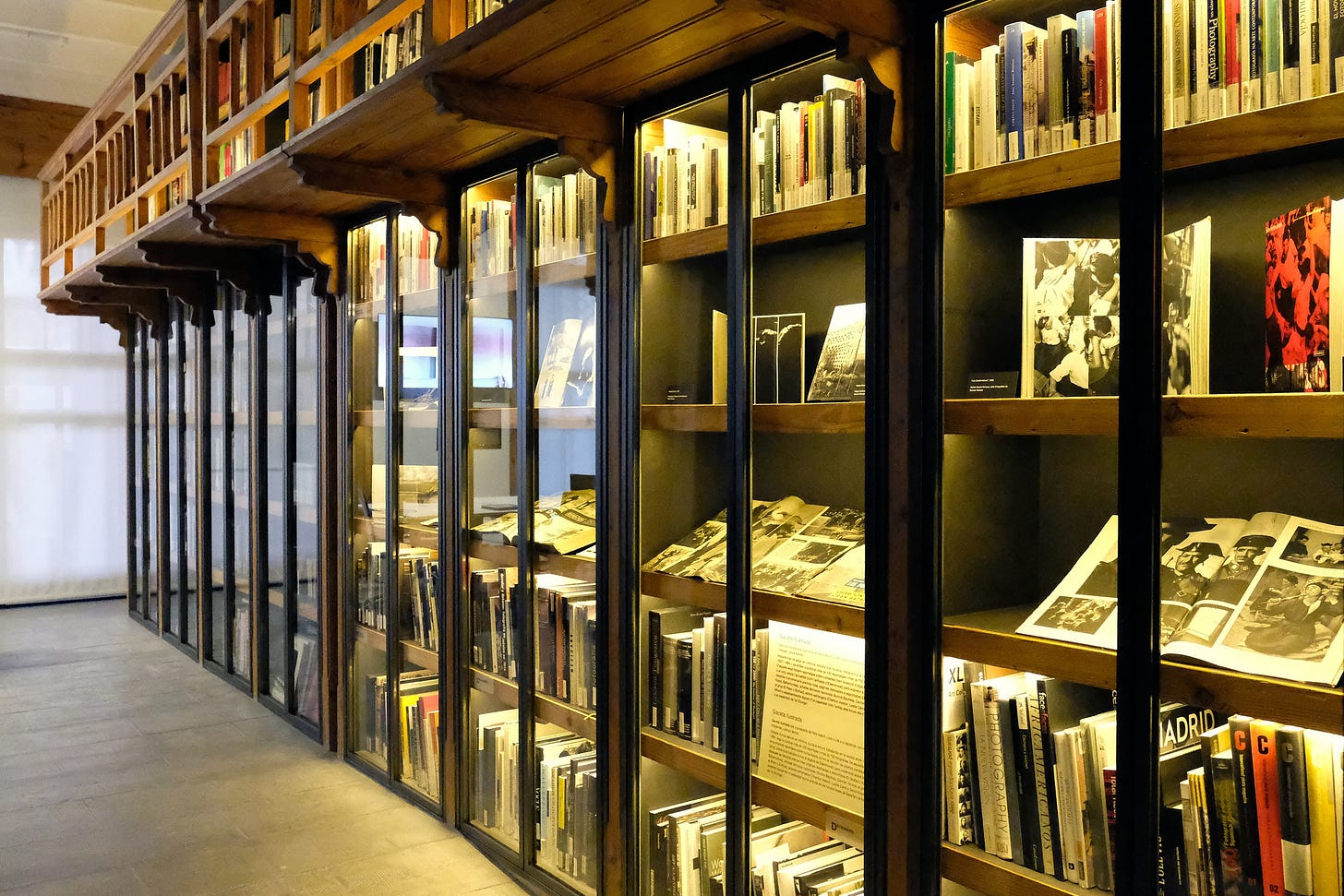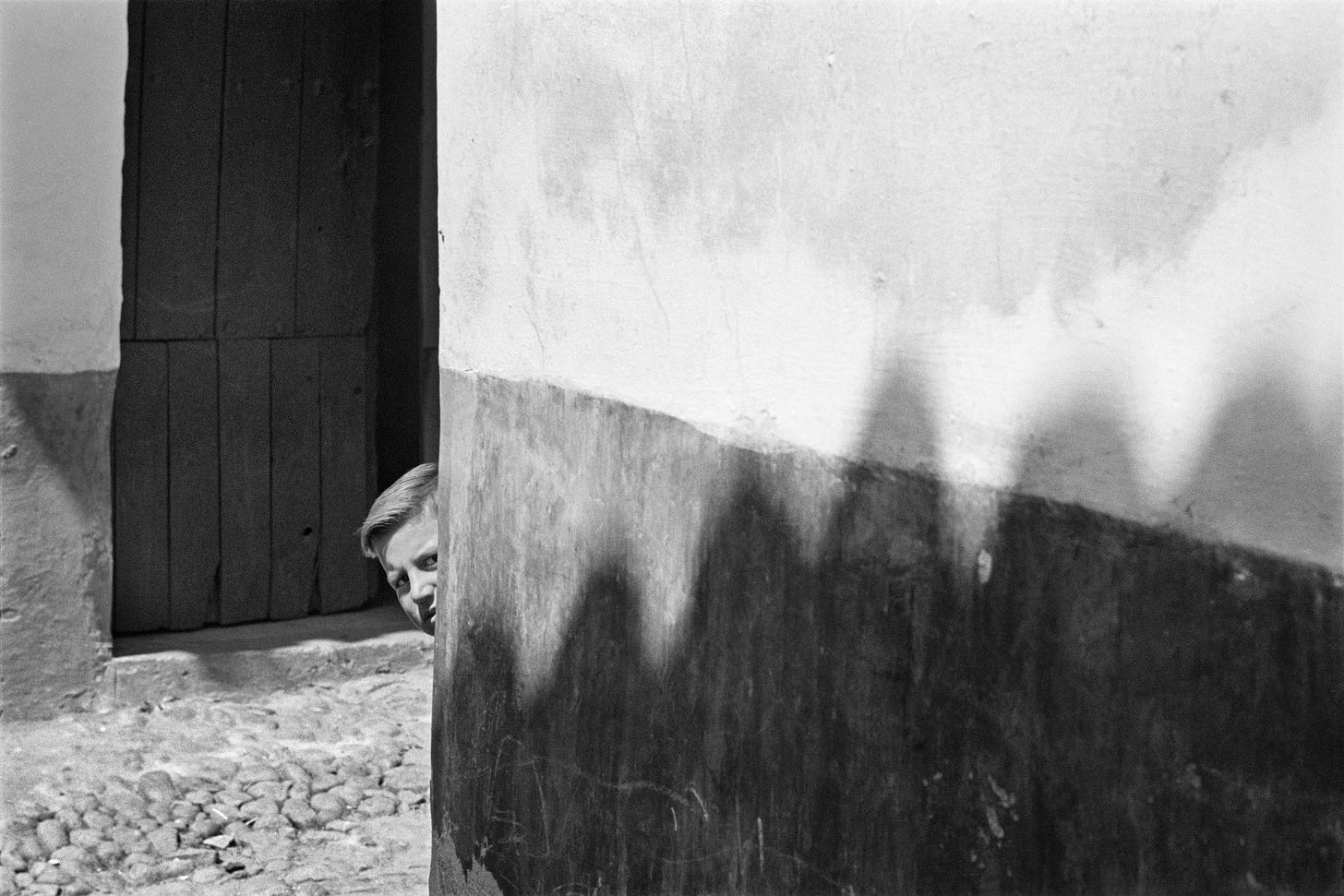"Me interesan las cosas normales, la vida cotidiana, pero vista desde otro ángulo. Siempre he dicho que lo extraordinario está en lo ordinario". Ramón Masats
"I am interested in ordinary things, everyday life, but seen from a different angle. I have always said that the extraordinary lies within the ordinary." — Ramón Masats
Mirar una fotografía es un acto de intimidad. Cuanto antes aceptemos la invitación del fotógrafo, antes podremos atravesar la piel de la realidad que nos rodea. Porque aunque abrimos los ojos cada día, nadie nos ha enseñado a mirar, y lo que es peor, nadie nos ha enseñado a vincularnos con lo que vemos. Sin embargo, hay quienes han hecho de ese vínculo una declaración de intenciones.
La fotografía no solo capta lo que vemos, sino que nos enfrenta a lo que somos y nos obliga a preguntarnos desde dónde observamos. Si toda fotografía es una forma de mirar, entonces también es una forma de pensar. Lo que nos diferencia no es lo que vemos, sino cómo lo vemos, y en ese cómo se juega nuestra relación con el mundo. Hay muchos tipos de fotógrafos algunos construyen imágenes desde la idea, otros persiguen la emoción, otros lo trascendente y muchos se quedan en la superficie. Masats, en cambio, deja que la realidad se exprese con la nitidez de lo inevitable. Su fotografía no busca impresionar ni embellecer, sino revelar el significado mismo de la intuición como brújula. Se mueve con naturalidad entre la ironía y la certeza del instante, dejando que la imagen hable sin necesidad de subrayar ningún camino. Xavier Miserachs, otro gran fotógrafo y amigo, lo describía como alguien que no tenía que demostrar nada, y lo más importante, que dejaba que sus imágenes se sostuvieran por sí solas.
Masats desconfiaba de los excesos teóricos sobre la fotografía, pero tenía claro que solo se puede fotografiar aquello que nos inquieta, aquello que despierta una reacción en nosotros. En su caso, esa reacción no era grandilocuente ni melodramática, sino un gesto de inteligencia y de distancia justa, como si su cámara fuese capaz de despojar la escena de artificios sin traicionar su esencia. Lo tenía claro:
“Lo que cuenta en primer lugar, es el hombre, pues un hombre no puede hacer una fotografía de mejor calidad que él mismo, y la mayor parte de los fotógrafos, el 90 por 100, no son ni la mitad de buenos que sus cámaras. Debemos, pues, en principio, perfeccionar sin cesar, sin fatiga, al fotógrafo, al hombre que manda a la máquina”.
Quizás por eso su obra se sostiene sin necesidad de adornos, porque no es la técnica lo que la hace memorable, sino su manera de encontrar en lo ordinario un camino a la verdad.
Looking at a photograph is an act of intimacy. The sooner we accept the photographer’s invitation, the sooner we can break through the surface of the reality that surrounds us. Because although we open our eyes every day, no one has ever taught us how to see—and worse still, no one has taught us how to connect with what we see. However, some have turned that bond into a statement of intent.
Photography not only captures what we see; it confronts us with who we are, forcing us to question the place from which we observe. If all photography is a way of looking, then it is also a way of thinking. What sets us apart is not what we see, but how we see it, and in that "how" lies our relationship with the world. There are many types of photographers: some build images from ideas, others pursue emotion, some seek the transcendent, and many stay on the surface. Masats, on the other hand, allows reality to express itself with the clarity of the inevitable. His photography does not aim to impress or beautify, but to reveal the very meaning of intuition as a compass. He moves naturally between irony and the certainty of the moment, letting the image speak without the need to underline any path. Xavier Miserachs, another great photographer and friend, described him as someone who didn't have to prove anything, and most importantly, allowed his images to stand on their own.
Masats was wary of theoretical excesses in photography, but he was certain that one can only photograph what unsettles us, what sparks a reaction within us. In his case, that reaction was neither grandiose nor melodramatic, but rather a gesture of intelligence and measured distance, as if his camera could strip the scene of artifices without betraying its essence. He knew it clearly:
"What matters first and foremost is the man, for a man, cannot take a photograph of greater quality than himself, and the vast majority of photographers, 90 per cent of them, are not even half as good as their cameras. We must, therefore, first and foremost, tirelessly and relentlessly refine the photographer, the man who commands the machine."
Perhaps that is why his work endures without the need for embellishment—because it is not the technique that makes it memorable, but his ability to find, within the ordinary, a path to truth.
La exposición Ramón Masats. El fotógrafo silencioso, organizada por Foto Colectania, rinde homenaje a un autor que nunca se limitó a registrar la realidad, sino que la convirtió en imagen con la exactitud de quien sabe dónde poner el ojo. Masats no busca el instante decisivo, sino que observa con la distancia justa para dejar que la imagen diga lo que tiene que decir. A través de 140 fotografías —muchas de ellas inéditas—, la muestra recorre una mirada que nos interpela, pero dejando el suficiente espacio para que la realidad se muestre tal como es.
El primer eje de esta exposición es su trabajo sobre Las Ramblas de Barcelona. Para Masats, este reportaje fue un reto: quería enfrentarse a un tema conocido y darle una nueva forma visual. “Las Ramblas son un tópico, y yo creo que entonces ya me gustaban los tópicos”. Su objetivo no era documentarlas, sino encontrar en ellas una mirada distinta. Así surgió una serie de imágenes que oscilan entre la abstracción geométrica y el retrato humano, donde lo cotidiano se convierte en descubrimiento. “El conjunto de este primer ensayo fotográfico no pretende describir en absoluto las Ramblas, de sobra conocidas. El reto que se impone Masats es construir una mirada nueva sobre una realidad dada a base de pinceladas sueltas”.1
Este trabajo formó parte de la exposición "Barcelona 1957. El momento imaginado", donde Masats, junto a Ricard Terré y Xavier Miserachs, capturó el pulso de la ciudad en plena transformación. Su serie sobre Las Ramblas destacaba por una aproximación distinta: no era un documento urbano, sino una exploración visual donde la geometría, el azar y la vida cotidiana se cruzaban en un equilibrio inesperado.
Otro de los grandes protagonistas de la muestra es su serie de Los Sanfermines, el trabajo que consolidó a Masats como fotógrafo. Su primer viaje a Pamplona fue en 1956, aunque aún se consideraba un aficionado, pronto entendió que allí tenía una historia visual que contar. “Para mí, Los Sanfermines fue una prueba. Quería ver si realmente podía hacer reportaje”. Y lo logró con un enfoque propio: en lugar de centrarse en los encierros, Masats retrató la fiesta desde sus márgenes, captando el agotamiento de los mozos, los rostros embriagados por el vino y el caos de la multitud. “Los Sanfermines son de masas. Puedes individualizar de vez en cuando, pero tienes que trabajar la masa”.
Junto a estos trabajos, la exposición también revisita Neutral Corner, la serie sobre el mundo del boxeo que realizó en los años 60. Fue Ignacio Aldecoa quien le introdujo en este universo, llevándole a gimnasios para que observara antes de fotografiar. “Llevaba cámara, pero casi no hice fotos. Quedaba con la gente para volver”. Masats capturó la crudeza del boxeo con imágenes en las que el movimiento, el sudor y la tensión se condensan en composiciones de geometría brutal. La puesta en página del libro, diseñada por Óscar Tusquets, reforzaba esa idea de secuencia cinematográfica que tanto le fascinaba.
Junto a estos trabajos, también se exhiben retratos que Masats realizó para Gaceta Ilustrada y otros medios. En ellos no hay artificio ni énfasis, solo la mirada precisa que sabía encontrar en un rostro aquello que no se puede forzar: un gesto distraído, una sombra que lo enmarca, la naturalidad de quien todavía no se ha protegido ante la cámara.
A lo largo de toda la exposición, su mirada se revela con la claridad de quien entiende que fotografiar no es acumular imágenes, sino reducirlas a lo esencial. No hay distracciones, no hay concesiones, solo la certeza de que, cuando todo lo superfluo desaparece, lo que queda es lo que verdaderamente define una imagen. Masats lo llamaba “imagen de síntesis”.
La fotografía es escribir con luz y revelar con tiempo. "Yo soy bastante intuitivo e irónico, pero no soy nostálgico. Al fin y al cabo, uno fotografía como es”. Y su fotografía sigue siendo exactamente eso: una mirada tan afilada como certera, una lección de síntesis, de precisión. Esta exposición no es solo un recorrido por su obra, sino la prueba de que su instinto logró convertir lo fugaz en un instante eterno.
The exhibition Ramón Masats. The Silent Photographer, organised by Foto Colectania, pays tribute to an author who never merely recorded reality but transformed it into an image with the precision of someone who knows exactly where to focus the lens. Masats does not seek the decisive moment but observes with just the right distance, allowing the image to speak for itself. Through 140 photographs—many of them previously unseen—the exhibition explores a perspective that challenges us while leaving enough space for reality to show itself as it is.
The first focus of this exhibition is his work on Las Ramblas in Barcelona. For Masats, this project was a challenge: he wanted to confront a well-known subject and give it a new visual form. "Las Ramblas are a cliché, and I think I already liked clichés back then." His aim was not to document them, but to find a different way of looking at them. This led to a series of images that oscillate between geometric abstraction and human portraiture, where the everyday becomes a discovery. "The aim of this first photographic essay is not at all to describe Las Ramblas, which are already well-known. Masats' challenge is to build a new perspective on a given reality through loose brushstrokes."
This work formed part of the exhibition Barcelona 1957. The Imagined Moment, where Masats, along with Ricard Terré and Xavier Miserachs, captured the pulse of the city during its transformation. His series on Las Ramblas stood out for its unique approach: it was not an urban document, but a visual exploration where geometry, chance, and daily life intersected in an unexpected balance.
Another major part of the exhibition is his series on the San Fermín festival, the work that cemented Masats' reputation as a photographer. His first trip to Pamplona was in 1956, when he still considered himself an amateur. Soon, however, he realised that there was a visual story to tell there. "For me, San Fermín was a test. I wanted to see if I could really do reportage." And he succeeded with his own approach: instead of focusing on the bull runs, Masats portrayed the festival from its fringes, capturing the exhaustion of the runners, the faces intoxicated by wine, and the chaos of the crowd. "San Fermín is about crowds. You can individualise now and then, but you have to work with the mass."
Alongside these works, the exhibition also revisits Neutral Corner, the series on the world of boxing that Masats created in the 1960s. It was Ignacio Aldecoa who introduced him to this world, taking him to gyms to observe before photographing. "I took the camera, but I hardly took any photos. I would meet people to return later." Masats captured the rawness of boxing with images in which movement, sweat, and tension condensed into compositions of brutal geometry. The layout of the book, designed by Óscar Tusquets, reinforced the idea of a cinematic sequence that fascinated Masats.
Also featured are portraits that Masats took for Gaceta Ilustrada and other media outlets. In these, there is no artifice or emphasis, only the precise gaze that knew how to find in a face what cannot be forced: a distracted gesture, a shadow framing it, the naturalness of someone who has not yet shielded themselves from the camera.
Throughout the exhibition, his gaze reveals the clarity of someone who understands that photographing is not about accumulating images but reducing them to the essentials. There are no distractions, no concessions, only the certainty that when everything superficial disappears, what remains is what truly defines an image. Masats called this an "image of synthesis."
Photography is writing with light and revealing with time. "I am quite intuitive and ironic, but not nostalgic. After all, one photographs as they are." And his photography remains exactly that: a gaze as sharp as it is precise, a lesson in synthesis and accuracy. This exhibition is not only a journey through his work but proof that his instinct turned the fleeting into an eternal moment.
La exposición
Información
Ramón Masats, el fotógrafo silencioso.
Del 17 de enero hasta el 25 de mayo de 2025
Fundación Foto Colectania
Passeig Picasso 14. 08003 Barcelona
www.fotocolectania.org
Quiero expresar mi agradecimiento a Sonia Masats por su labor gestionando el archivo de su padre, gracias a su tesón, su visión y su amor por preservar el trabajo de Ramón, existen sinergias valiosas que permiten que estas fotografías lleguen a nosotros y se conviertan en algo universal capaz de construir y afianzar nuestra memoria.
I want to express my gratitude to Sonia Masats for her work managing her father's archive. Thanks to her perseverance, vision, and love for preserving Ramón's work, there are valuable synergies that allow these photographs to reach us and become something universal, capable of building and strengthening our memory.
«No me preocupa lo que quede de mí. Lo importante es haber disfrutado el proceso, haber hecho lo que quería hacer. Lo demás, ya no es cosa mía».
“I don't worry about what will remain of me. What matters is having enjoyed the process, having done what I wanted to do. The rest is no longer my concern.”
Ramón Masats
Foto Colectania - Nota de prensa
** Todas las citas textuales de Ramón Masats han sido extraídas de la siguiente tesis: Fuster Pérez, J. (2008). El roble en el páramo. La trayectoria fotográfica de Ramón Masats [Tesis doctoral]. Universitat Politècnica de València. **

